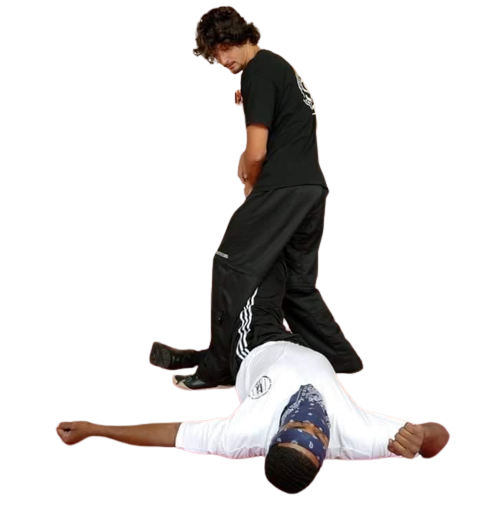Wing Chun vs Brazilian Jiu-Jitsu: Which Style is Best for Self-Defense and Combat?
By Maurice Novoa a master under the Yuen Kay Shan, Ip Man and Pan Nam lineages.
Introduction:
In the realm of self-defense and combat, the comparison between Wing Chun and Brazilian Jiu-Jitsu (BJJ) is a topic of interest. Each style brings its unique techniques, strategies, and philosophies to the table. In this comprehensive guide, we will delve deeper into the comparison between Wing Chun and BJJ, examining their strengths, limitations, and practical applications in real-world self-defense scenarios.
1. Wing Chun For Multiple Attackers:
When faced with multiple attackers, Wing Chun offers distinct advantages. Its focus on close-quarters combat, rapid strikes, and simultaneous defense and offense allows practitioners to effectively engage multiple opponents. Wing Chun’s economy of motion, precise techniques, and emphasis on maintaining mobility make it well-suited for handling multiple assailants. By employing quick strikes to vulnerable targets, practitioners can neutralize threats swiftly and create opportunities for escape or further counterattacks.
On the other hand, BJJ’s primary focus on ground fighting and grappling techniques poses challenges in scenarios involving multiple attackers. While BJJ practitioners excel in one-on-one ground combat, the dynamic nature of multiple assailants creates additional risks. Going to the ground leaves the practitioner vulnerable to strikes and attacks from other attackers. BJJ practitioners must adapt their strategies to prioritize getting back on their feet and maintaining situational awareness to mitigate these risks effectively.
2. Ground Fighting:
BJJ has gained recognition for its expertise in ground fighting. Practitioners are well-versed in controlling opponents, utilizing leverage, joint locks, and submission holds to gain dominance on the ground. BJJ techniques enable practitioners to neutralize larger opponents and create advantageous positions for submissions or escapes.
In contrast, Wing Chun’s focus is primarily on standing techniques and close-quarters combat. While it may not specialize in ground fighting like BJJ, Wing Chun practitioners are trained in techniques that allow them to maintain a standing position, defend against takedowns, and quickly regain control if the fight goes to the ground. By utilizing sweeps, strikes, and effective footwork, Wing Chun practitioners can minimize the time spent on the ground and maximize their chances of returning to a standing position.
3. Dealing with Grabs:
Both Wing Chun and BJJ offer effective methods for dealing with grabs, but their approaches differ. Wing Chun utilizes trapping techniques, which involve using sensitivity and redirection to break free from grabs and counterattack. By capitalizing on close-quarters combat and the concept of simultaneous defense and offense, Wing Chun practitioners can swiftly neutralize grabs and create openings for strikes.
In BJJ, practitioners develop a deep understanding of body mechanics, leverage, and control, which can be applied to handle grabs effectively. While BJJ techniques may not address grabs in the same direct manner as Wing Chun, the grappling expertise gained through training can enable practitioners to manipulate the opponent’s balance and control their joints, providing options for escapes and submissions.
Conclusion:
The question of which style, Wing Chun or BJJ, is best for self-defense and combat does not have a definitive answer. Both styles bring unique strengths and limitations to the table. Wing Chun’s emphasis on close-quarters combat, mobility, and simultaneous defense and offense make it well-suited for handling multiple attackers and engaging in standing exchanges. BJJ’s expertise in ground fighting, control, and submissions provides valuable tools for one-on-one encounters and the ability to neutralize opponents on the ground.
Ultimately, the effectiveness of a martial art style in self-defense depends on various factors, including the individual’s training, skill level, physical attributes, and the specific context of the encounter. It is worth noting that a well-rounded self-defense strategy may involve integrating elements from multiple disciplines to adapt to different situations. By understanding the strengths and limitations of Wing Chun and BJJ, practitioners can make informed decisions about training and select the approach that aligns with their goals and circumstances.

